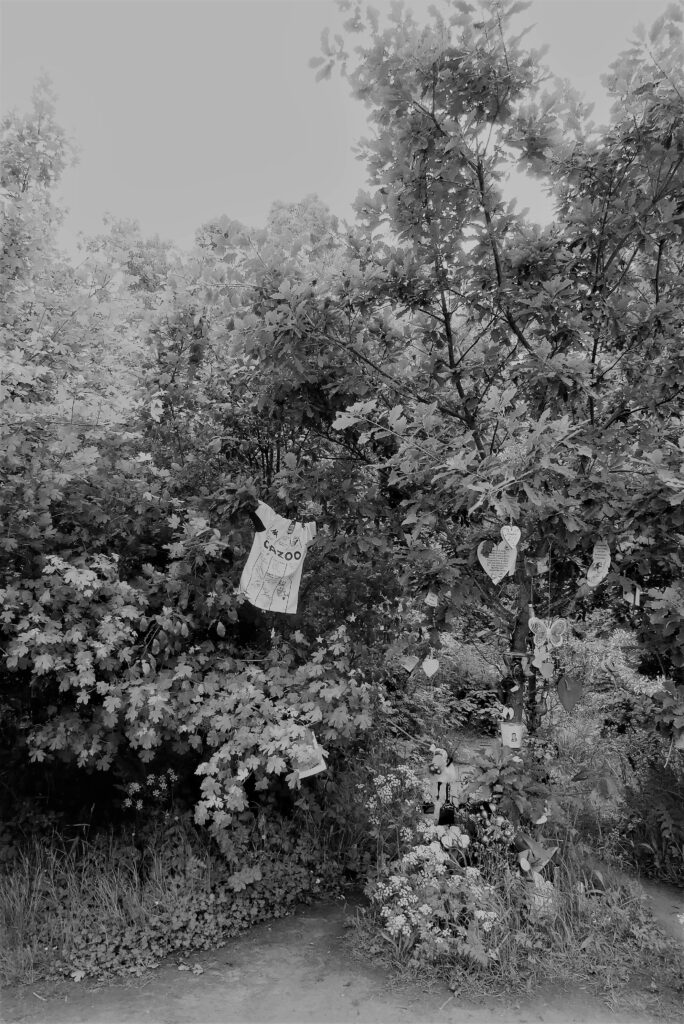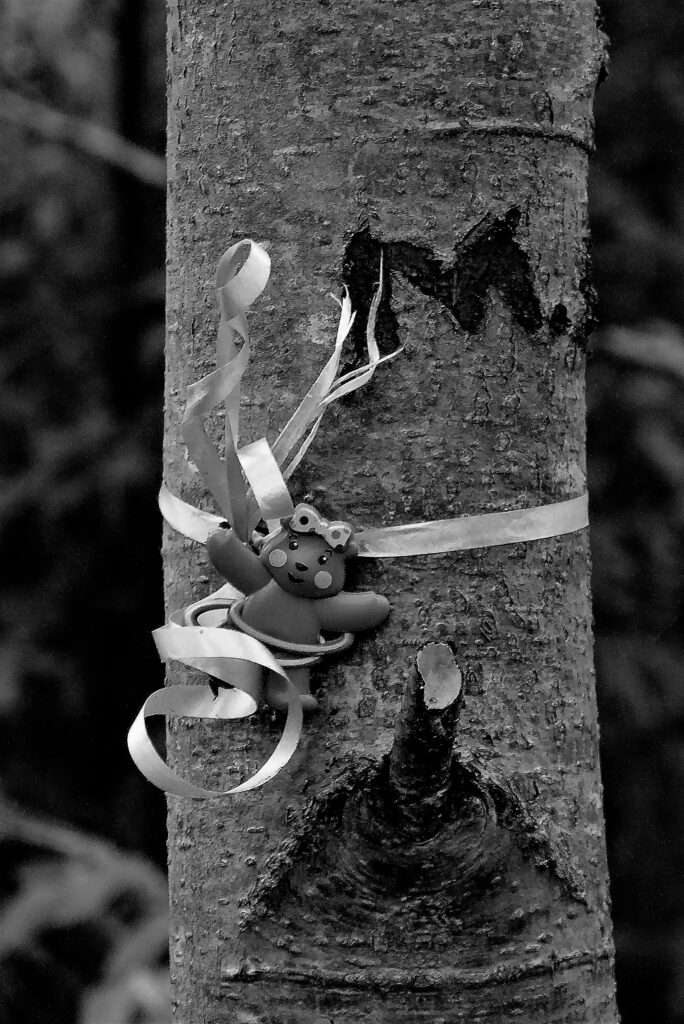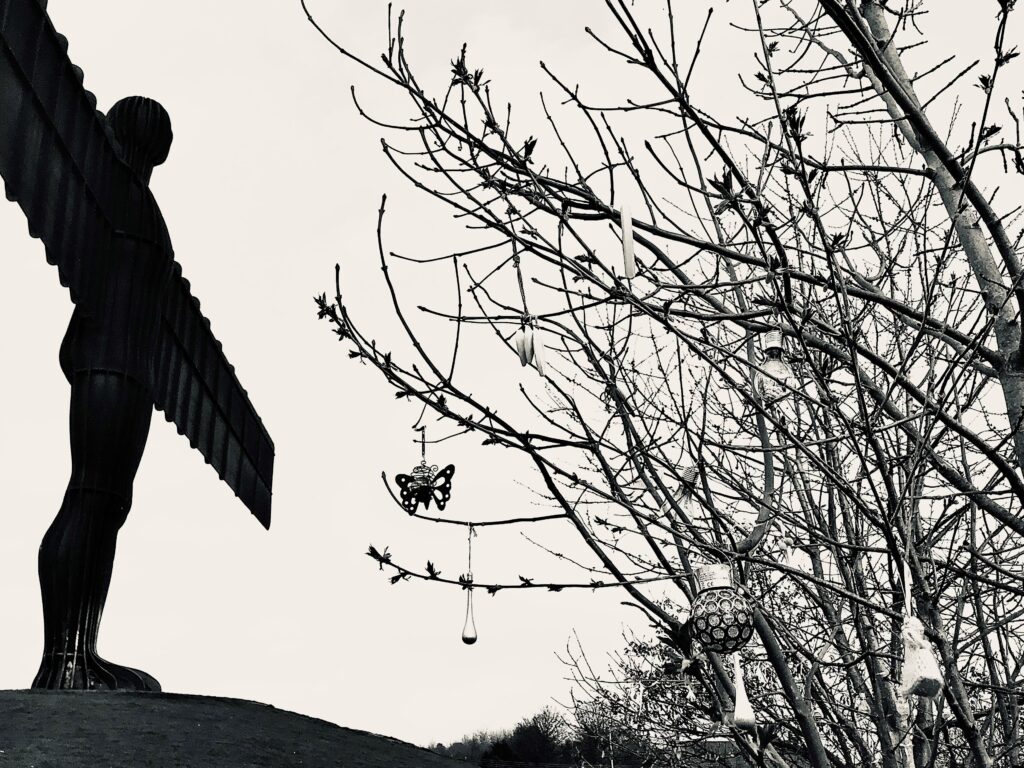
Although the weather is still warm, there is a definite feel of autumn when I visit The Angel today. Leaves have started to fall in the copse of trees, and it is noticeably lighter and less shaded than in the summer months, though there is not yet the open, exposed feeling of the winter season. The horse chestnut tree that stands behind the fence marking the western perimeter of the site is dropping conkers and their prickly cases litter the ground.
The copse was planted at the same time as The Angel was erected and it has now grown to maturity. The main planting is of alder trees, and it is around their slender trunks that many of the ribbons and tokens are tied. Alders thrive in wet ground, which strengthens their wood, and they improve soil fertility on former industrial wasteland. This makes the tree an ideal choice for planting at The Angel site, which was formerly used for mining. Rainwater drains from the mound on which The Angel stands, meaning that the path through the copse is often muddy underfoot. Recent rain has made the ground waterlogged today, and I pick my way carefully where the feet of others have already churned the ground.

An alder wood was traditionally known as a carr and was thought to have a mysterious atmosphere, with the green dye from the tree’s flowers believed to colour the clothes of fairies. When the pale wood of the alder is cut, it turns a deep orange as if the tree is bleeding, which caused the alder to be associated with pain. I think of the resonances of the memorial with these traditional beliefs: children often refer to the copse as a fairy garden, and the bark of some of the trees has been incised with the marks of people’s grief.

The tree at the entrance to the copse is an oak, and its acorns are turning from green to brown. The branches of this tree are always filled with tokens and many objects are placed around its base. Today, a gathering of stones of different sizes is placed nearby, although there is nothing to indicate the significance of this memorial. The tree acts as a portal to the copse and is visible from The Angel, which helps explain why it is the focus for so many of the tributes and messages that are left. Like the alder, the oak also has traditional associations with the sacred, and pagan rituals were commonly practised in oak groves.
A plum cherry tree stands nearest The Angel, marking the head of the steep and often-slippery incline that leads out of the copse. In early spring, the tree is a dazzle of white blossom against blue skies. In winter, baubles and wire butterflies hang suspended from its bare branches. I often think of this tree as a sign of hope, associating its flowers with the end of winter and its decorations with the festivities of the Christmas season.

References
‘A-Z of British Trees’, Woodland Trust, https://www.woodlandtrust.org.uk/trees-woods-and-wildlife/british-trees/a-to-z-of-british-trees/
